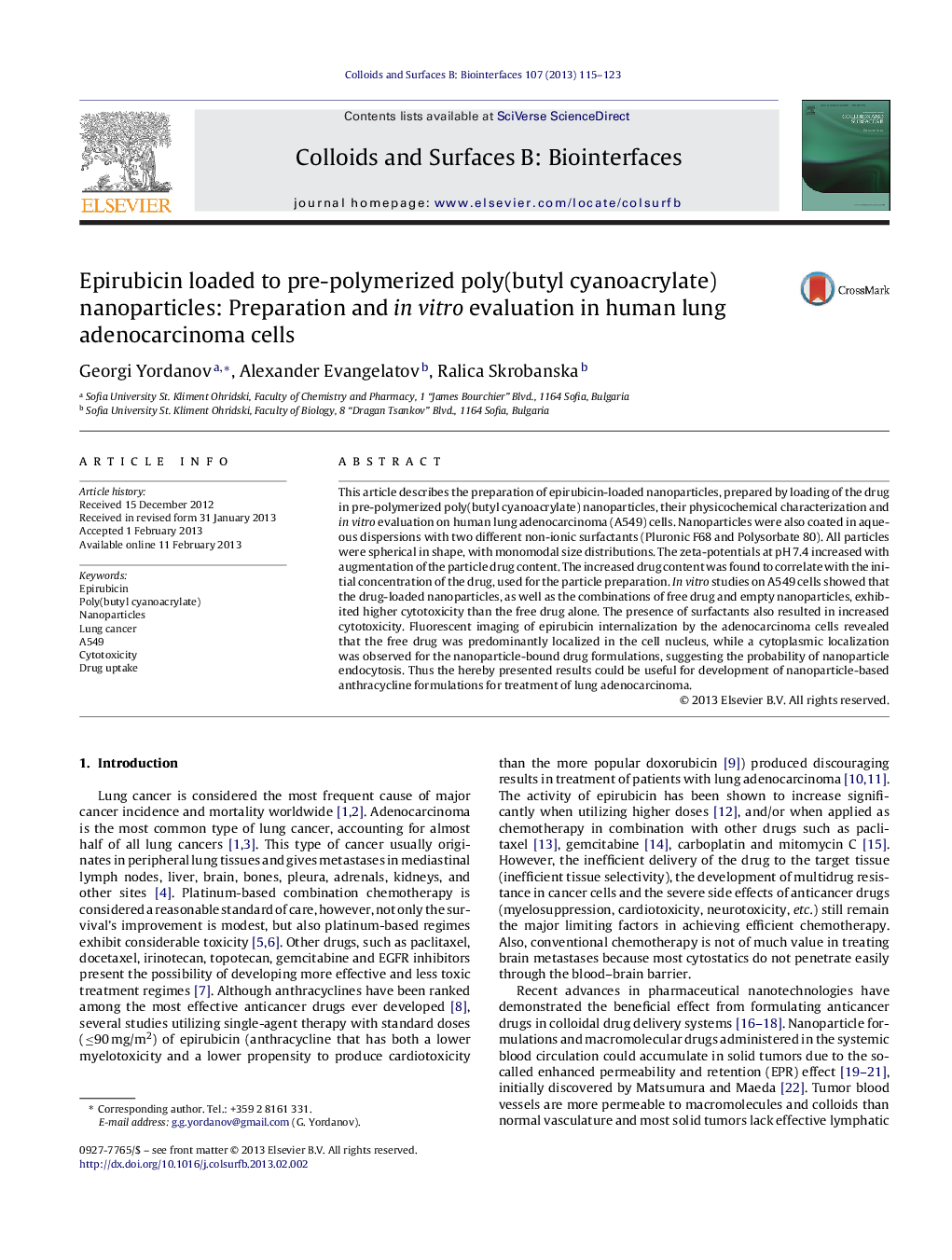| Article ID | Journal | Published Year | Pages | File Type |
|---|---|---|---|---|
| 600128 | Colloids and Surfaces B: Biointerfaces | 2013 | 9 Pages |
This article describes the preparation of epirubicin-loaded nanoparticles, prepared by loading of the drug in pre-polymerized poly(butyl cyanoacrylate) nanoparticles, their physicochemical characterization and in vitro evaluation on human lung adenocarcinoma (A549) cells. Nanoparticles were also coated in aqueous dispersions with two different non-ionic surfactants (Pluronic F68 and Polysorbate 80). All particles were spherical in shape, with monomodal size distributions. The zeta-potentials at pH 7.4 increased with augmentation of the particle drug content. The increased drug content was found to correlate with the initial concentration of the drug, used for the particle preparation. In vitro studies on A549 cells showed that the drug-loaded nanoparticles, as well as the combinations of free drug and empty nanoparticles, exhibited higher cytotoxicity than the free drug alone. The presence of surfactants also resulted in increased cytotoxicity. Fluorescent imaging of epirubicin internalization by the adenocarcinoma cells revealed that the free drug was predominantly localized in the cell nucleus, while a cytoplasmic localization was observed for the nanoparticle-bound drug formulations, suggesting the probability of nanoparticle endocytosis. Thus the hereby presented results could be useful for development of nanoparticle-based anthracycline formulations for treatment of lung adenocarcinoma.
Graphical abstractFigure optionsDownload full-size imageDownload as PowerPoint slideHighlights► Epirubicin is loaded in pre-polymerized poly(butyl cyanoacrylate) nanoparticles. ► Drug content of nanoparticles can be controlled by the initial drug concentration. ► Epirubicin-loaded nanoparticles are more cytotoxic than the free drug to A549 cells. ► The free drug localizes in the cell nucleus, while the nanoparticle-bound drug localizes in the cytoplasm.
